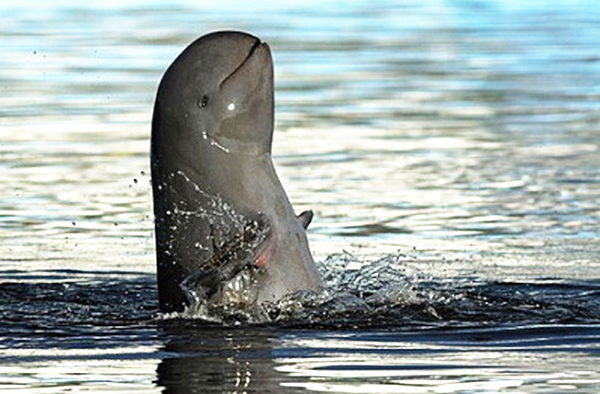The Chilika Development Authority (CDA) here on Friday said scientists and government officials sighted 156 endangered Irrawaddy dolphins in Chilika, Asia’s largest brackish water lagoon.
Chilika, which boasts of highest single lagoonal population of the aquatic mammal in the world, was surveyed by 20 teams comprising 100 personnel.
“The annual survey was conducted by ‘Transact Survey Method’ followed worldwide for population of aquatic mammals. Each survey team was equipped with binoculars, GPS, range finder and data recording sheets. This year, there was total sighting of 156 dolphins,” said Susanta Nanda, Chief Executive, CDA.
Mr. Nanda said the mammals’ movement was made easier with the removal of fishing enclosures, and one significant population was now observed in the southern sector of the lake. Last year, the dolphin population in Chilika was counted at 150. Irrawaddy dolphins are protected under the Wildlife (Protection) Act 1972.
A total of 12,42,000 birds of 105 water bird species, and 26,405 birds of 76 wetland dependent species, were counted from the entire lagoon on January 5. “Friday’s survey validated this data and a population of 1 million plus is estimated. This year, more birds are found in the central and southern sectors of Chilika. A sudden increase in the population of diving ducks that prefer open water was noticed during the current season,” he pointed out.
During the flora and fauna monitoring of Chilika on Friday, five species of sea grasses were reported.
“Sea grass species such as Holodule uninervis, Holodule pinifolia, Halophila ovalis, Halophila ovata and Halophila beccarii were recorded during the survey. This occurs over an area of 155 sq. km., an increase from 152 sq. km. of last year. These ecosystem engineers have brought cheer against the declining trends throughout the world, and now Chilika has 22% of India’s sea grass area,” said the CDA.
Source: The HIndu
You may also like
-
Trade Connect E-platform For Exports Is Single Window, Fast, Accessible And Transformational: Shri Piyush Goyal
-
Five Successful Years of Pradhan Mantri Kisan Maandhan Yojana (PM-KMY)
-
New Heat-Based Approach To Cancer Treatment Can Reduce Chemotherapy Doses
-
Global Study by Leading Experts : Swachh Bharat Mission Drives Significant Reductions in Infant Mortality Rates in India
-
Scientists Take A Major Step Towards Unification Of Classical & Quantum Gravity
